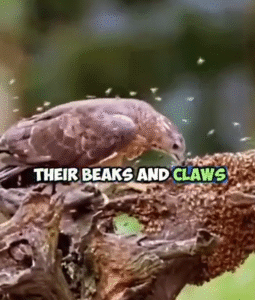The Bee Hawk: A Fascinating Predator of the Insect World
In the vibrant and competitive world of insects, few creatures captivate the imagination quite like the bee hawk. Despite its name, the bee hawk is not a bird but a moth—specifically, a member of the Hemaris genus, commonly known as the bee hawk-moth. With its transparent wings, buzzing flight, and fuzzy, bee-like body, this extraordinary insect is a master of disguise and a predator with an unexpected twist.
Bee hawk-moths are often mistaken for bees due to their uncanny mimicry. Their coloration, body shape, and flight patterns mimic those of bumblebees or honeybees, a clever form of protection known as Batesian mimicry. By imitating the appearance of stinging insects, bee hawks discourage predators, even though they are completely harmless themselves. But beneath their gentle appearance lies a fascinating role as a stealthy predator—not of other insects, but of nectar-producing plants.
While not predators in the traditional sense, bee hawks exhibit predatory behavior in their larval stage. As caterpillars, they feed voraciously on the leaves of specific host plants, such as honeysuckle and bedstraw. These caterpillars can strip entire sections of vegetation, making them effective herbivores that prey upon plants with the same focus and determination a hawk might show when diving for a mouse.
As adults, bee hawks become aerial marvels. Their flight is agile, fast, and hovering, much like a hummingbird. They dart between flowers, using a long, coiled proboscis to sip nectar while hovering in midair. This allows them to feed without landing, reducing the risk of predation and enabling them to access a wide variety of blooms. Their hovering technique also makes them efficient pollinators, playing a critical ecological role in plant reproduction.
What makes the bee hawk truly fascinating is its evolutionary niche. It blurs the line between predator and pollinator, combining the visual deception of a bee, the feeding habits of a hummingbird, and the predatory instincts of a caterpillar. In this way, it challenges our typical understanding of predators in the insect world. It’s not always about killing other animals—sometimes, predation means mastering the art of stealth, mimicry, and targeted consumption.
The bee hawk’s lifecycle is as captivating as its appearance. Females lay eggs on host plants, and upon hatching, the caterpillars begin their life of leafy consumption. After weeks of feeding, they pupate in the soil before emerging as adults, ready to fly, feed, and reproduce. The cycle continues, quiet and elegant, a testament to the delicate balance of nature.
In a world dominated by giant mammals and birds of prey, the bee hawk-moth reminds us that even the tiniest creatures can possess complexity, beauty, and power. Its blend of mimicry, metamorphosis, and ecological importance makes it one of the most fascinating “predators” of the insect world—an unsung marvel fluttering just beyond the reach of ordinary attention.
